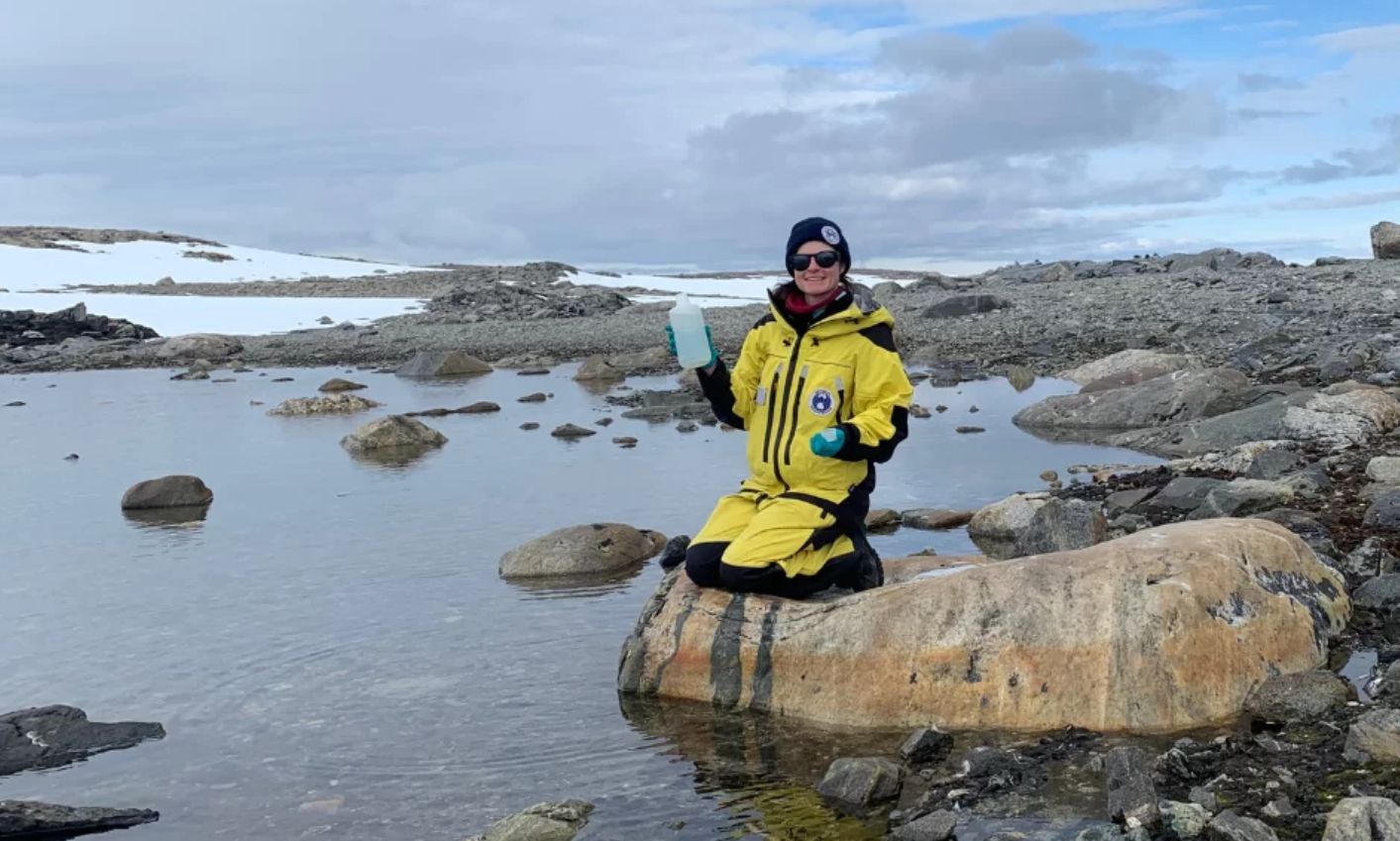
Dr. Krystal Randall collecting lake water samples in Antarctica to determine what organic material exists in the lakes.
Credit: Krystal Randall
AGU News
U.S. Climate Collection collaboration launches
AGU and the American Meteorological Society are accepting proposals for a joint special collection of research articles called the U.S. Climate Collection: Informing Assessment of Risks and Solutions. Forged in the wake of the dismissal of the Sixth National Climate Assessment (NCA) authors, the collection serves to lay the groundwork for future assessments of climate risks and solutions in the United States while keeping scientists across disciplines engaged on critical topics. [press release][collection]
Featured Research
Penguin poop, dust and moss drive carbon cycling in Antarctic lakes
Researchers collected water from five lakes in East Antarctica to determine what in the lakes helps move the carbon cycle along. This work is typically done by organic materials and the microbes that digest them that are found in warmer lakes. For many lakes, plants are the big contributors through things like fallen leaves. But Antarctica doesn’t have many plants. Instead, organic matter in lakes was primarily dust from snowmelt and penguin poo. The organic material was then transformed mostly by sunlight, from the high UV rays present when the hole in the ozone is over Antarctica. The colder temperatures slowed down the microbes that would typically move forward the carbon cycle in warmer lakes. [JGR Biogeosciences study][SAEF press release]
Lake floors help track salmon populations over a century
Scientists ran experiments on several freshwater lakes off the North Pacific coast of the U.S. and Canada that serve as salmon nursery lakes, including Frazer, Red and Kinaskan lakes. They took core samples from the lakebed to plot a history of salmon spawning and populations over the course of the century using left behind biological markers that settled at the bottoms of the lakes. Frazer Lake was a unique study because salmon were only introduced to the lake in 1951 during a stocking program, leaving scientists with distinct markers for exactly when the lake changed. [JGR Biogeosciences study]
Hydropower dams: flood protection or hazard?
About a quarter of hydropower dams measured likely induced flooding downstream. Researchers found multiple common trends with those dams, including experiencing more rain and an increase in rain per year, the rivers were oftentimes shorter, and the area around the dams saw smaller increases in population. That smaller urbanization could mean the dams may be taken care of less, leading to less water storage inside the dams due to sediment buildup. On the other end, around 40% of dams likely protected against flooding downstream. The protective dams were often in locations with more temperate weather and longer downstream areas for flood waters to filter into. [Earth’s Future study]
Droughts sync up as the climate changes
A new study reconstructs roughly 800 years of streamflow history in India’s major rivers, showing an increase in synchronous drought linked to human-cause climate change. [Eos research spotlight][AGU Advances study]
Are there metal volcanoes on asteroids?
Upcoming NASA observations may reveal whether ferrovolcanism shaped 16 Psyche’s metallic surface and hidden interior. [Eos editors’ highlight][JGR Planets study]